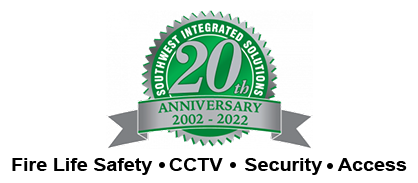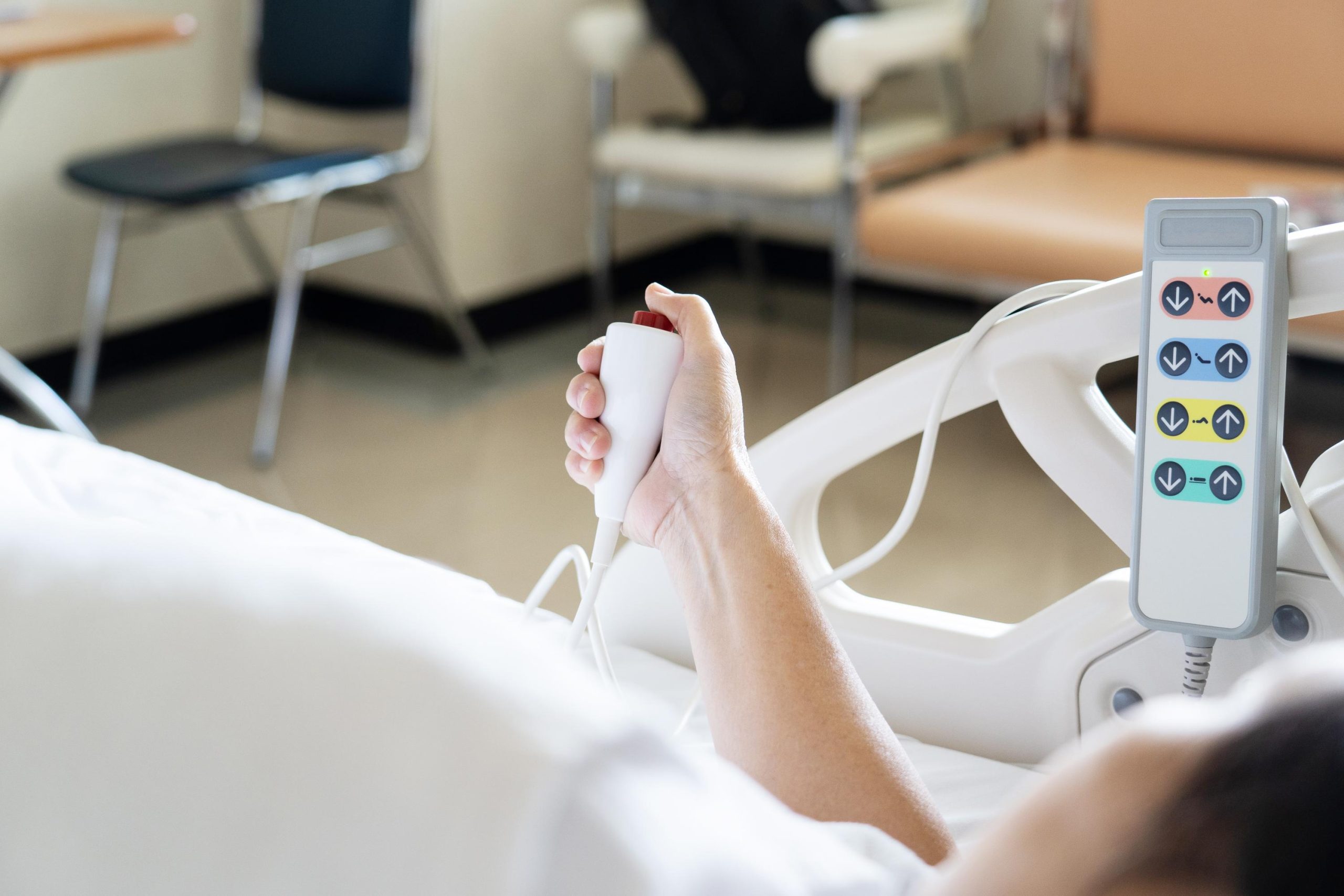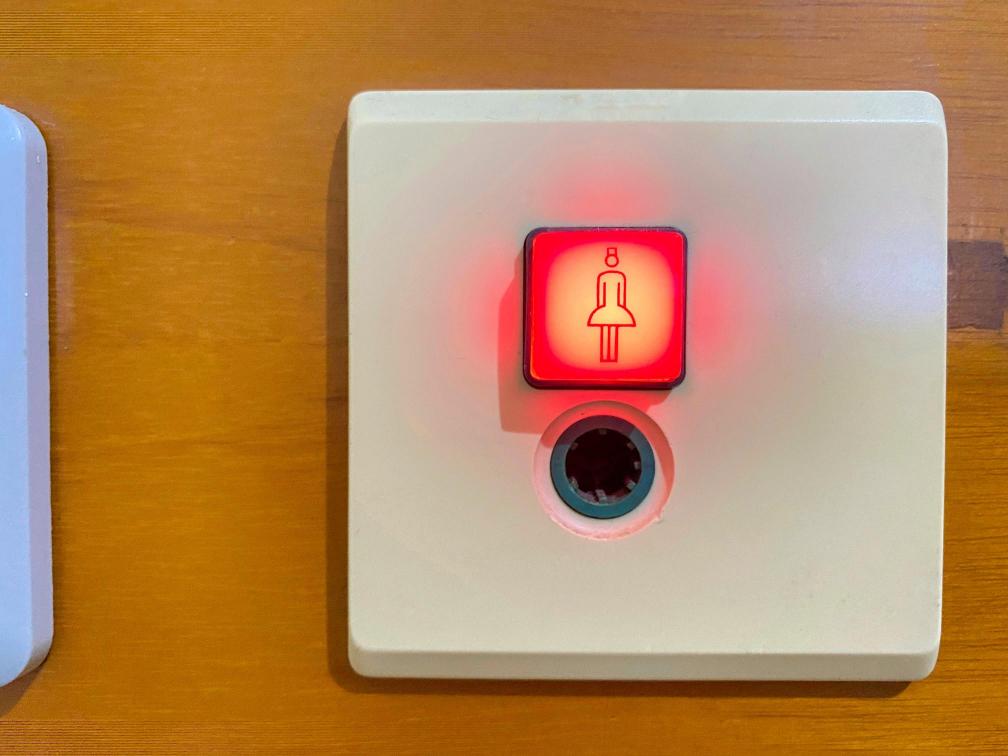What Is the Nurse Call System
What Is the Nurse Call System
A Nurse Call System is a communication system used in hospitals, nursing homes, assisted living facilities, and other healthcare settings to enable patients or residents to request assistance from nursing staff or caregivers. These systems typically consist of a network of call buttons or pull cords installed in patient rooms or bathrooms, which, when activated, alert nursing staff or caregivers to the patient’s need for assistance.
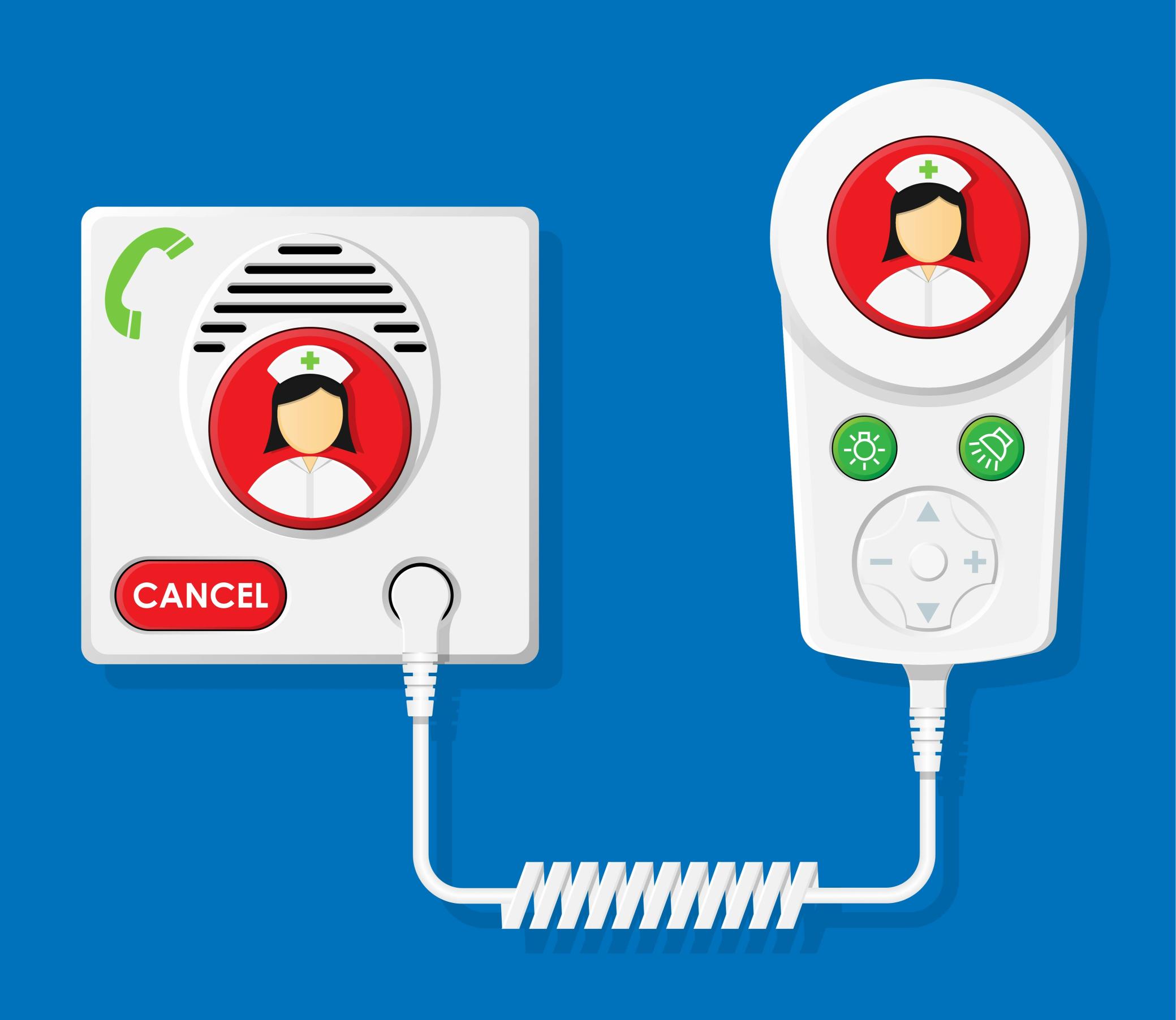
Standard Features
Nurse Call Systems can vary in complexity, ranging from simple push-button systems to more advanced systems that integrate with other healthcare technologies such as electronic medical records (EMR) or patient monitoring systems. Some standard features of Nurse Call Systems may include:
Call Buttons
In healthcare facilities such as hospitals, nursing homes, and assisted living centers, the implementation of call buttons represents a fundamental aspect of patient care infrastructure. These call buttons, strategically mounted on walls within patient rooms and bathrooms, serve as a lifeline, enabling individuals to summon assistance swiftly and effectively from nursing staff or caregivers when needed.
Functioning as a conduit for communication between patients and healthcare providers, call buttons epitomize accessibility and responsiveness in the provision of medical care. Positioned within arm’s reach, these unassuming devices carry immense significance, empowering patients to articulate their needs and concerns at the push of a button. This accessibility is vital for individuals whose mobility may be limited or who require immediate attention due to medical emergencies or discomfort.
Its Sense of Reassurance
Beyond their physical presence, call buttons embody a profound sense of reassurance and security for patients navigating the unfamiliar terrain of healthcare facilities. The mere sight of these unobtrusive yet purposeful fixtures is a tangible reminder that help is readily available, fostering a sense of comfort and peace of mind among patients and their loved ones.
Moreover, call buttons’ functionality extends far beyond the mere act of summoning assistance; they symbolize dignity and autonomy for patients, affirming their agency in shaping their care experiences. By affording individuals the means to initiate communication with healthcare providers on their terms and call buttons to uphold the principles of patient-centered care, wherein patients are regarded as active participants in the decision-making process regarding their treatment and well-being.
Furthermore, the significance of call buttons transcends individual patient interactions, serving as a linchpin in the overarching framework of healthcare delivery. Integrated into broader systems of patient monitoring and care coordination, these devices facilitate seamless communication and collaboration among multidisciplinary healthcare teams, ensuring that responses to patient calls are swift, coordinated, and tailored to meet everyone’s unique needs.
Call buttons represent far more than mere fixtures on walls; they embody the ethos of compassionate caregiving, empowerment, and responsiveness at the heart of quality healthcare delivery. As a tangible expression of commitment to patient well-being, these unassuming devices stand as silent sentinels, ready to spring into action momentarily, bridging the gap between patient needs and clinical expertise with unwavering efficiency and compassion.
Pull Cords
In the intricate tapestry of healthcare infrastructure, every component plays a crucial role in ensuring the well-being and safety of patients. Among these components, pull cords emerge as an indispensable feature within Nurse Call Systems, offering patients an alternative means of summoning assistance in moments of need. Complementing the functionality of traditional call buttons, pull cords exemplify versatility and inclusivity, catering to the diverse needs and abilities of individuals navigating the complex landscape of healthcare environments.
At first glance, pull cords may appear unassuming, yet their significance transcends their modest appearance. Mounted within reach in patient rooms and bathrooms, these slender cords serve as lifelines, providing a direct conduit for communication between patients and nursing staff or caregivers. Unlike call buttons, which require a pressing motion, pull cords offer a tactile solution for individuals with limited dexterity or mobility impairments, ensuring that assistance is readily accessible to all patients, regardless of their physical abilities.
Its Mechanism
The mechanism behind pull cords is elegantly simple yet remarkably effective. By grasping the cord within reach and exerting a gentle tug, patients can initiate a call for help, triggering an immediate response from healthcare providers. This intuitive design empowers patients with agency and control over their care experiences, allowing them to articulate their needs and concerns quickly and confidently.
Moreover, pull cords serve as a testament to the principle of universal design in healthcare, wherein environments and systems are intentionally crafted to be accessible and inclusive for individuals of all abilities. By offering multiple modalities for communication and assistance, Nurse Call Systems equipped with pull cords foster an environment of equity and dignity, ensuring that every patient can participate fully in their care journey, irrespective of any physical limitations they may face.
Beyond their functional utility, pull cords embody a more profound ethos of compassion and empathy within healthcare settings. In moments of vulnerability and distress, these unassuming cords serve as silent companions, offering reassurance and support to patients navigating the challenges of illness or injury. Pulling the cord becomes more than a call for help; it symbolizes trust, vulnerability, and the profound interconnectedness between patients and their caregivers.
Furthermore, the integration of pull cords into Nurse Call Systems represents a paradigm shift in the delivery of patient-centered care. By prioritizing accessibility and inclusivity, healthcare facilities commit to honoring their patient populations’ diverse needs and preferences. Whether it be a simple request for assistance with mobility or a more urgent call for medical attention, pull cords provide patients with direct communication with the dedicated professionals entrusted with their care.
Centralized Control Station
Within the intricate ecosystem of healthcare facilities, the Centralized Control Station is a beacon of coordination and efficiency, serving as the nerve center through which patient requests for assistance are channeled, received, and swiftly addressed. As an essential component of Nurse Call Systems, this centralized hub embodies the convergence of technology and human expertise, facilitating seamless communication and collaboration among healthcare providers to ensure the highest standards of patient care.
At its core, the Centralized Control Station represents a nexus of connectivity, where the thread of patient needs and caregiver responsiveness intertwine to form a cohesive tapestry of care delivery. Situated within nursing stations or dedicated control rooms, this pivotal hub is the focal point for incoming patient calls, transmitted through the network of call buttons, pull cords, or other communication devices dispersed throughout the facility.
The journey of a call begins with the simple act of pressing a button or pulling a cord as patients signal their need for assistance with a gesture as effortless as it is profound. Instantaneously, these signals traverse the labyrinthine pathways of the Nurse Call System, converging upon the Centralized Control Station with remarkable speed and precision. Here, skilled staff members stand poised to receive and triage incoming calls, equipped with the expertise and empathy needed to assess each situation swiftly and effectively.
Upon receiving a call, staff members at the Centralized Control Station spring into action, leveraging their training and experience to prioritize and allocate resources according to the urgency and understanding of each request. Whether a simple request for toileting assistance or a more critical call for medical intervention, every signal is met with the same unwavering commitment to providing timely and compassionate care.
Its Significance
The significance of the Centralized Control Station extends far beyond its role as a mere conduit for communication; it serves as a linchpin in the broader healthcare delivery framework, facilitating coordination and collaboration among multidisciplinary teams to optimize patient outcomes. Through real-time monitoring and tracking capabilities, staff members can monitor the status of incoming calls, allocate resources accordingly, and ensure that no request for assistance goes unanswered.
Moreover, the Centralized Control Station serves as a nexus for data collection and analysis, providing valuable insights into trends, patterns, and areas for improvement in patient care delivery. By harnessing the power of technology and analytics, healthcare facilities can identify opportunities to streamline workflows, enhance efficiency, and elevate patient care quality.
The Centralized Control Station embodies the ethos of responsiveness, efficiency, and compassion at the heart of modern healthcare delivery. As a hub of activity and coordination, it stands as a testament to the tireless dedication of healthcare providers who work tirelessly to ensure that every patient receives the attention and support they need when they need it most. In the ever-evolving healthcare landscape, the Centralized Control Station remains a steadfast anchor, guiding the ship of patient care through the turbulent seas of illness and uncertainty with unwavering resolve and expertise.
Staff Notification
In the intricate web of healthcare delivery, prompt and efficient notification of nursing staff or caregivers is a cornerstone of patient safety and well-being. When a call is initiated through the Nurse Call System, a symphony of alerts and indicators springs into action, ensuring that those entrusted with the care of patients are promptly made aware of their needs.
A cascade of notifications is unleashed upon a patient activating a call button or pull cord, alerting nursing staff or caregivers to the impending request for assistance. Audible alarms resonate through the corridors of healthcare facilities, piercing through the ambient hum of activity to capture the attention of those within earshot. Simultaneously, visual indicators illuminate, casting a beacon of light upon the designated control or nursing stations where staff members await their next call to action.
In addition to traditional alarm systems, modern Nurse Call Systems harness the power of technology to deliver notifications directly to the fingertips of nursing staff and caregivers. Mobile devices and pagers serve as conduits for instant communication, providing real-time updates and alerts to ensure no call for assistance goes unnoticed or unanswered. Healthcare providers empowers to respond swiftly and decisively to the evolving needs of their patients, regardless of their location within the facility, through the seamless integration of digital notifications.
Its Significance
The significance of staff notification extends far beyond its role as a mere alert mechanism; it represents a lifeline connecting patients with the dedicated professionals entrusted with their care. Each notification serves as a call to duty, summoning nursing staff and caregivers to the bedside of those in need, where they can offer comfort, reassurance, and expert assistance.
Moreover, the timely notification of nursing staff or caregivers is critical in optimizing patient outcomes and satisfaction. By ensuring that requests for assistance are addressed promptly and effectively, healthcare facilities can enhance the overall quality of care provided to patients, fostering an environment of trust, safety, and compassion.
Integration With Other Systems
Integrating Nurse Call Systems with other healthcare technologies represents a paradigm shift in the delivery of patient care, ushering in an era of unprecedented efficiency, coordination, and quality. Advanced Nurse Call Systems seamlessly interface with myriad complementary technologies, including electronic medical records (EMR), patient monitoring systems, and real-time location systems (RTLS), to create a holistic ecosystem that enhances every facet of the care experience.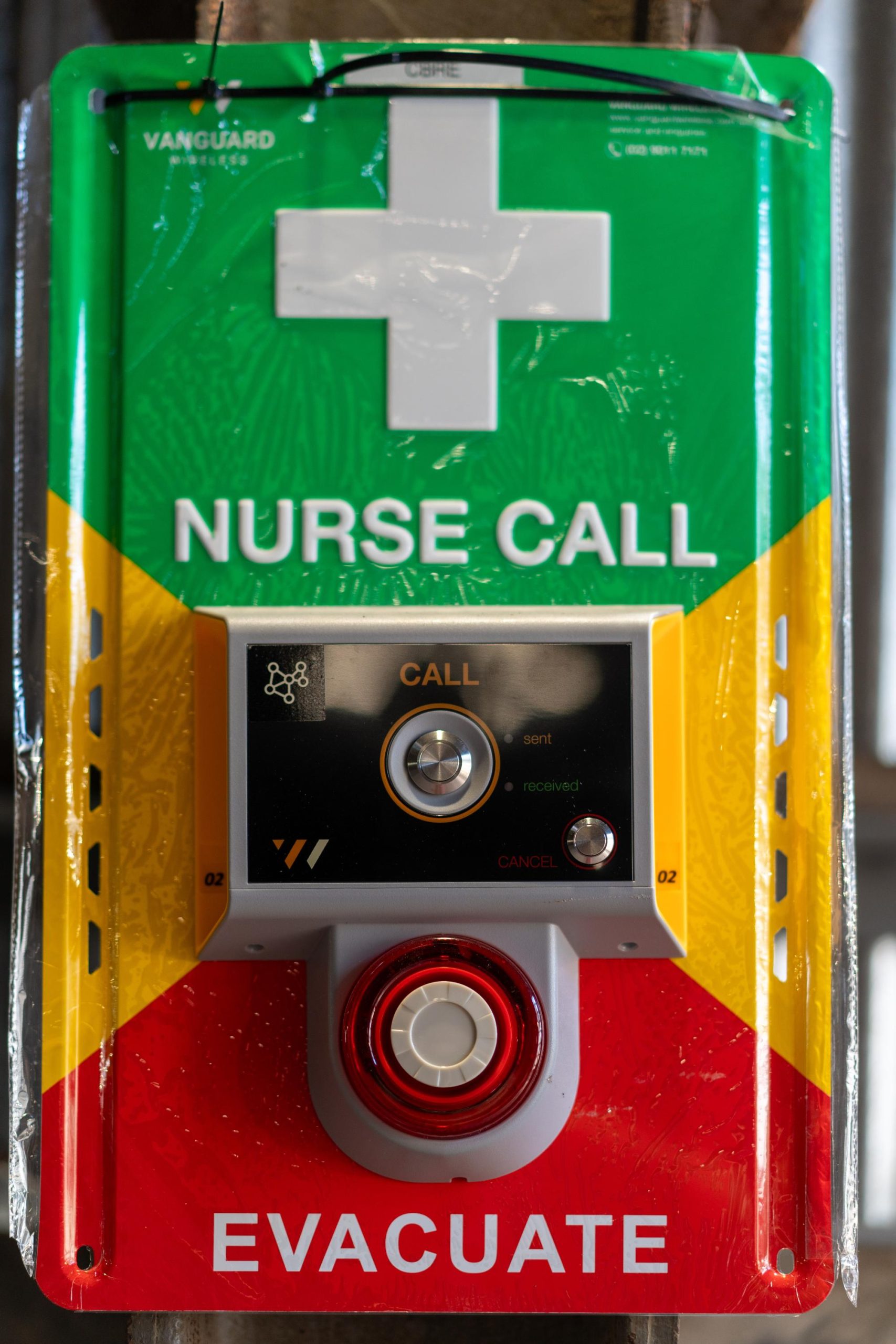
At the heart of this integration lies a commitment to providing patients with more comprehensive and personalized care. By linking Nurse Call Systems with electronic medical records (EMR), healthcare providers gain instant access to critical patient information, making informed decisions and tailoring interventions to meet individual needs. Whether reviewing medication histories, allergy profiles, or care plans, this integration empowers clinicians with a comprehensive understanding of each patient’s unique medical background, facilitating more precise and effective care delivery.
Furthermore, the integration of Nurse Call Systems with patient monitoring systems enables healthcare providers to continuously monitor vital signs, trends, and changes in patient status in real-time. By leveraging this wealth of data, clinicians can detect early warning signs of deterioration, intervene proactively, and prevent adverse events before they escalate. This proactive approach to patient monitoring enhances patient safety, promotes better outcomes, and reduces the burden on healthcare resources.
Integration of Nurse Call System with RTLS
In addition, the integration of the Nurse Call System with real-time location systems (RTLS) offers unparalleled visibility into the whereabouts of patients, staff, and equipment within healthcare facilities. By tracking the movements of individuals and assets in real-time, healthcare providers can optimize workflow efficiency, streamline resource allocation, and minimize response times to patient calls. Whether locating a wandering patient, identifying the nearest available caregiver, or tracking medical equipment status, this integration fosters a culture of operational excellence and responsiveness.
Moreover, the synergy created by integrating the Nurse Call System with other healthcare technologies extends beyond the walls of individual facilities, facilitating seamless communication and collaboration across the continuum of care. Whether coordinating transitions between care settings, sharing vital patient information with external providers, or facilitating remote consultations, this interconnected ecosystem ensures continuity of care. It promotes a cohesive, patient-centered approach to healthcare delivery.
Integrating Nurse Call Systems with other healthcare technologies represents a transformative leap forward in providing safer, more efficient, and more personalized patient care. By harnessing the power of integration, healthcare providers can unlock new possibilities for innovation, collaboration, and excellence, ultimately improving outcomes and enhancing the overall care experience for patients and providers alike.
Nurse Call Systems are crucial in facilitating communication between patients and healthcare providers, improving response times, and enhancing the overall quality of patient care in healthcare facilities.
System Integration with SIS
Starting with the right software and systems is crucial for making integration as straightforward as possible. However, in addition to other factors, choosing the correct integration platform for your project may influence your chances of success. Get in contact with the largest special system integrator in the state of Arizona-Southwest Integrated Solutions today!

